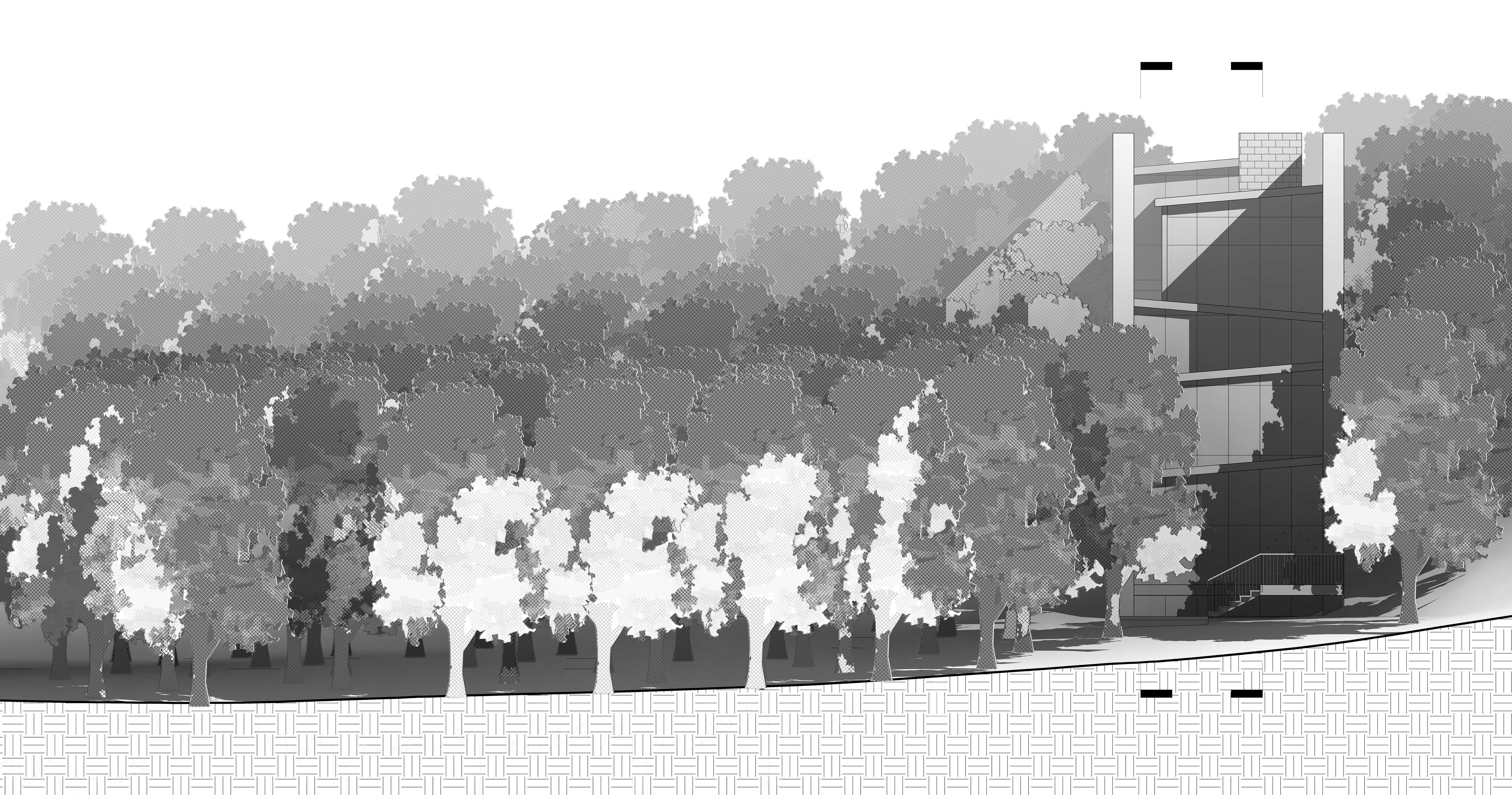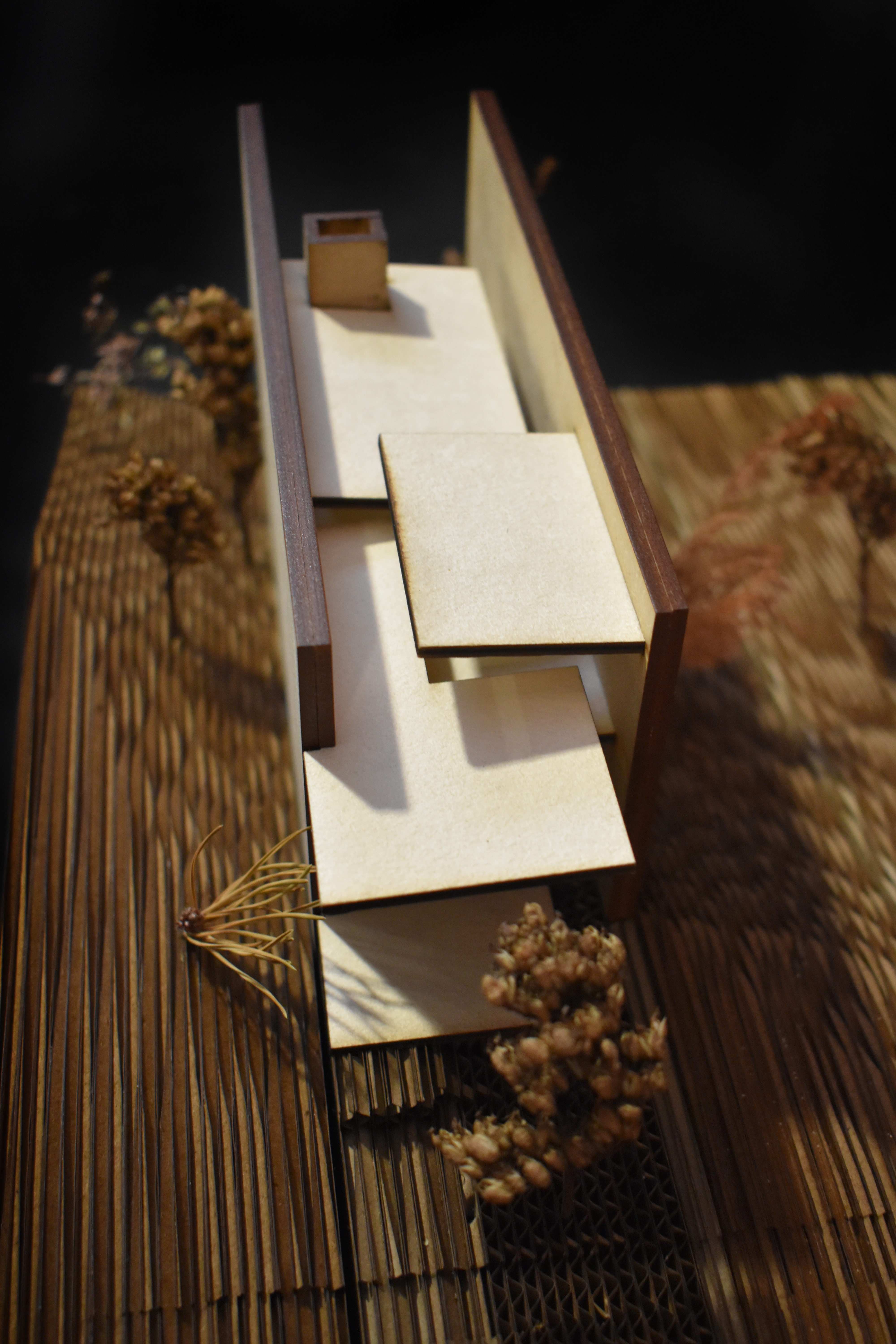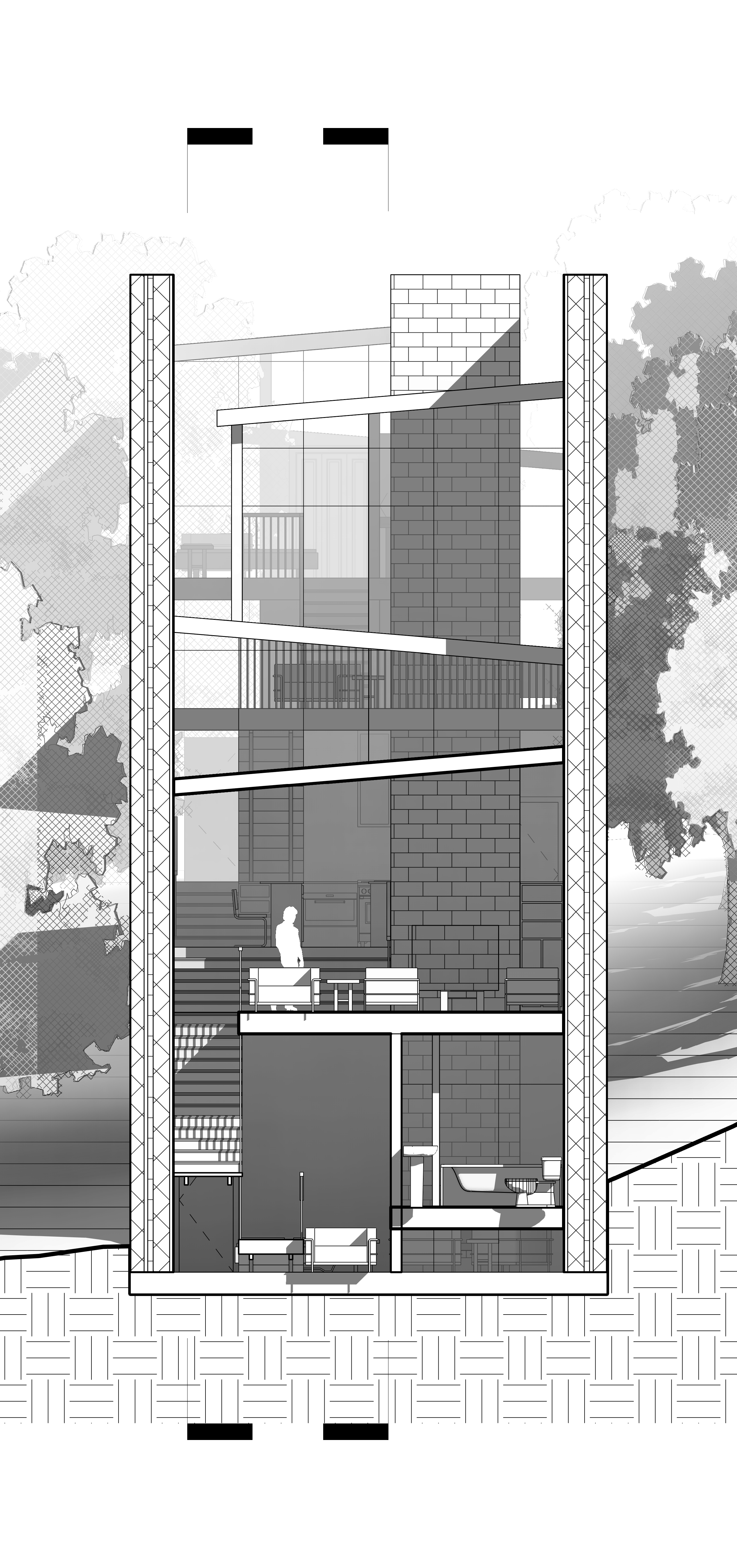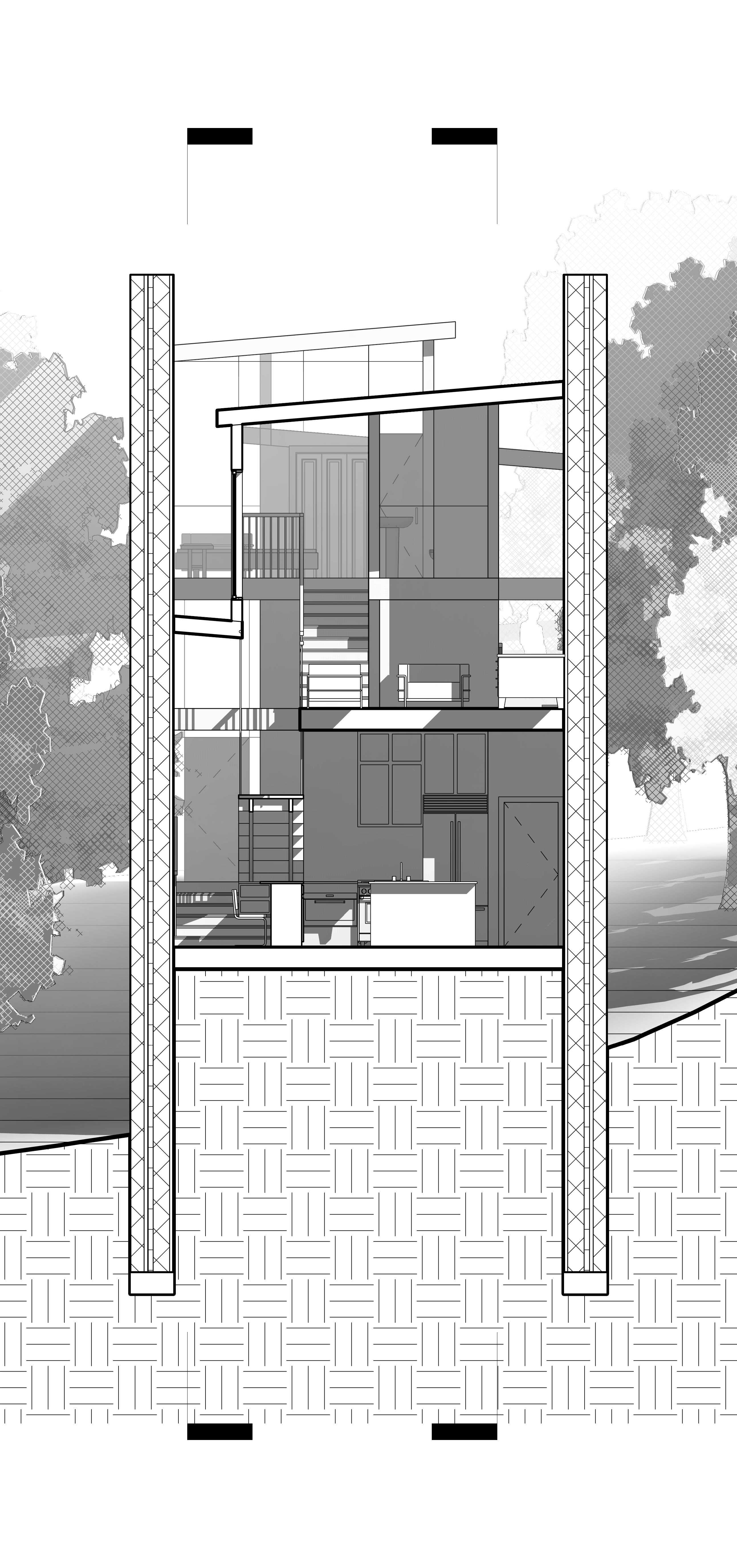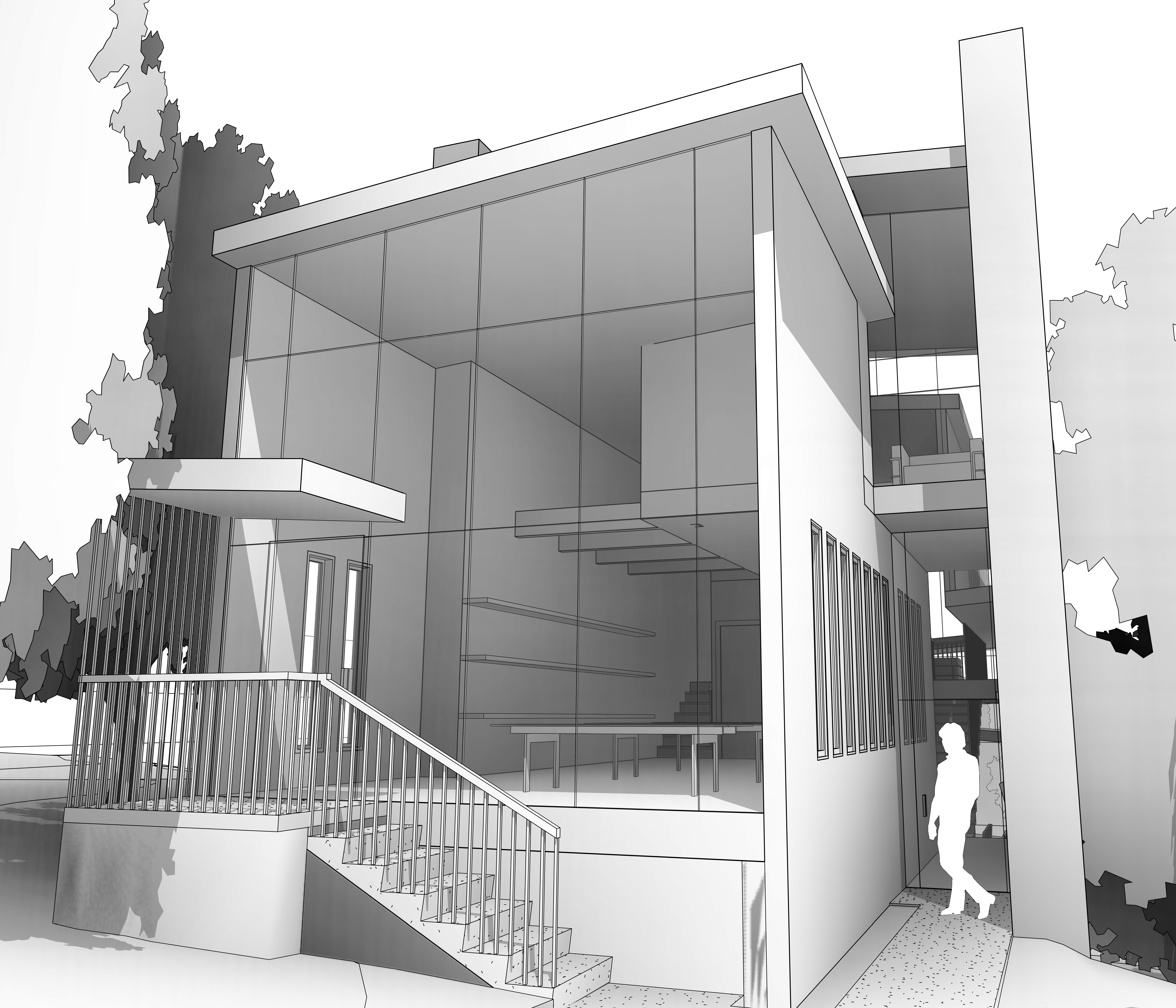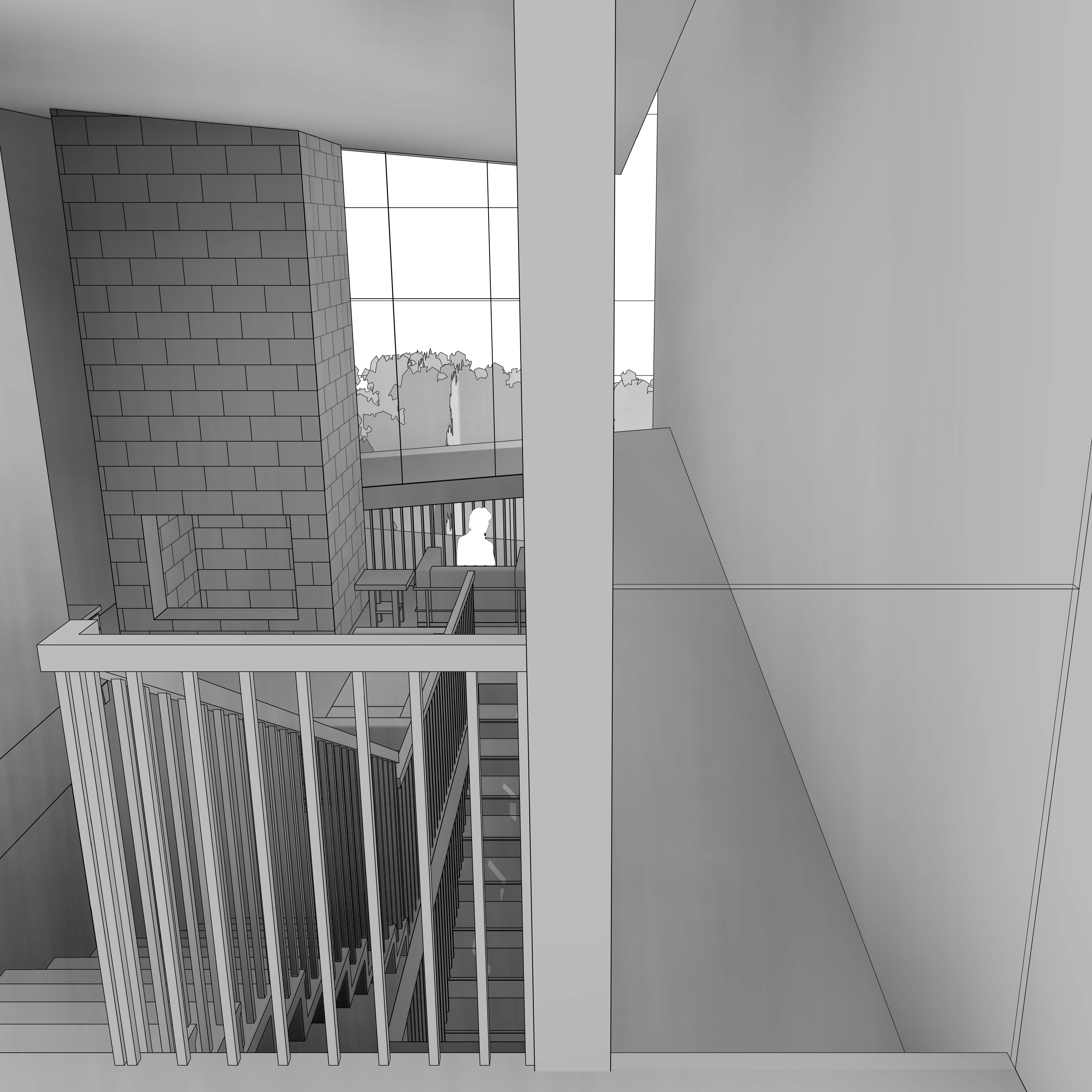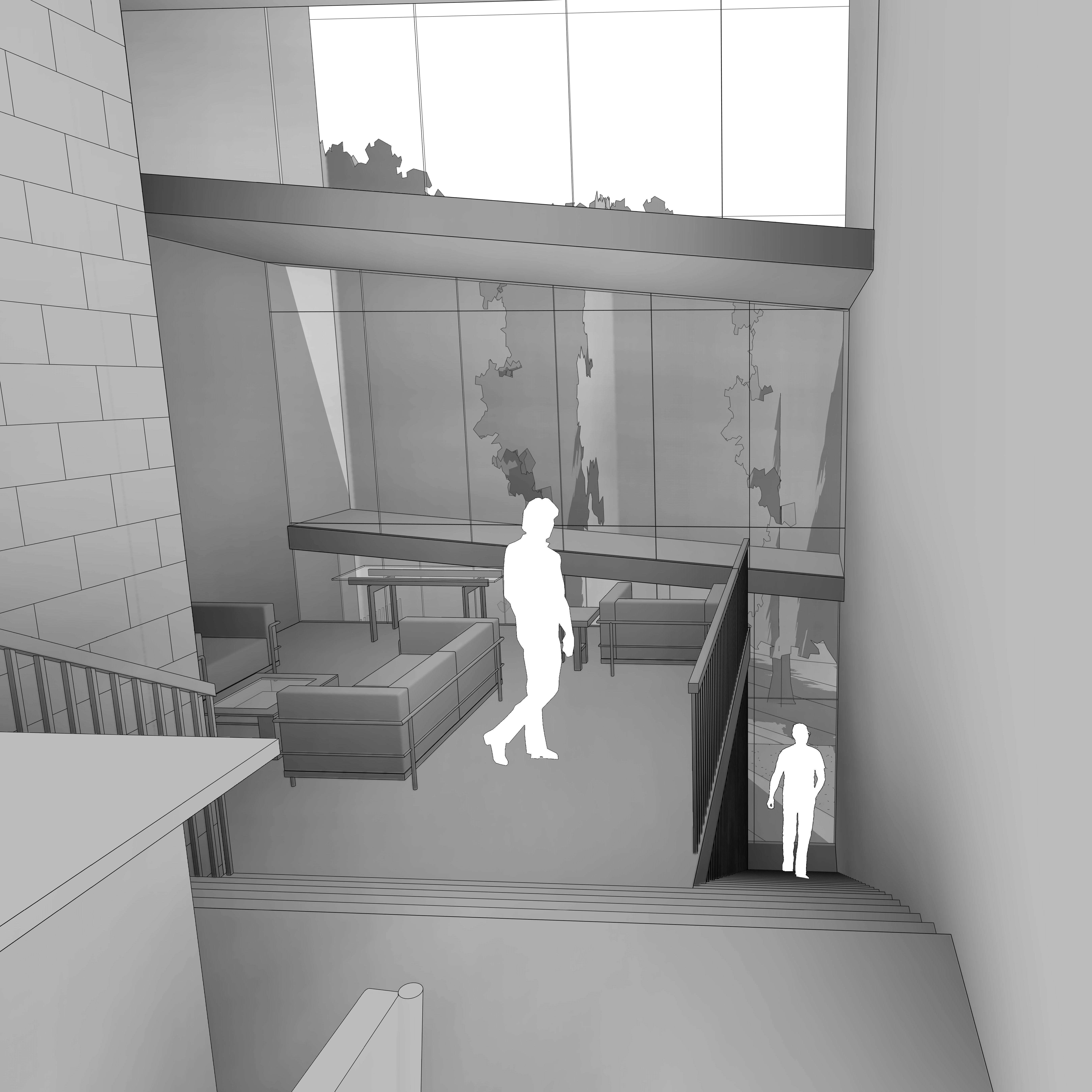arch 332 individual studio project | 2019
Lee Washesky, Architecture Lecturer
2nd place, Hajjar Modern House Design Competition
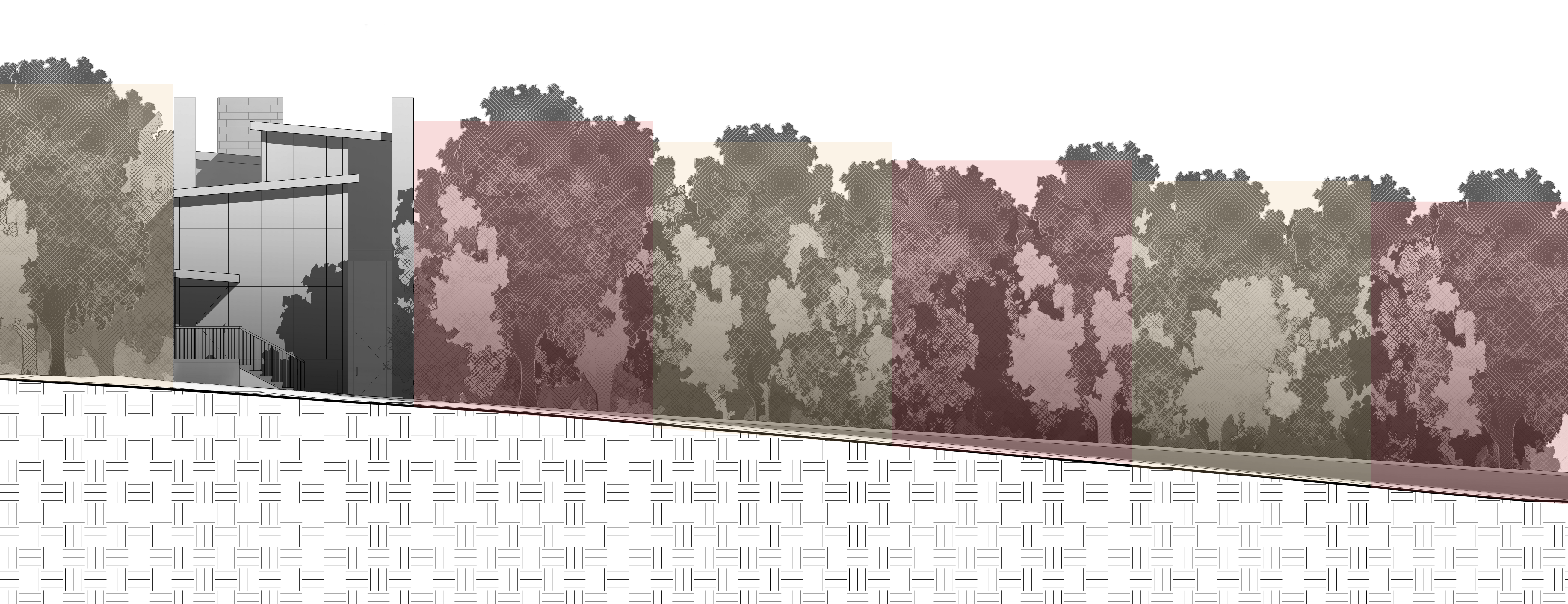
When we achieve 21st century architecture, single family homes will be obsolete. The Frank Lloyd Wrightian ideal of Broadacre sprawl—each family with their own house which turns its back on the street in favor of the carport—will be considered a moral travesty. The social isolation caused by the environmental menace called the single-family home impacts every urban dweller negatively. When 21st century architecture is achieved, row houses and other, more dense forms of houses will be the default.
This single family detached house, located on a large forested lot, adjacent to an elementary school, near a high school, and in the vicinity of downtown State College, is built to enable future densification with the addition of attached row houses on either side.
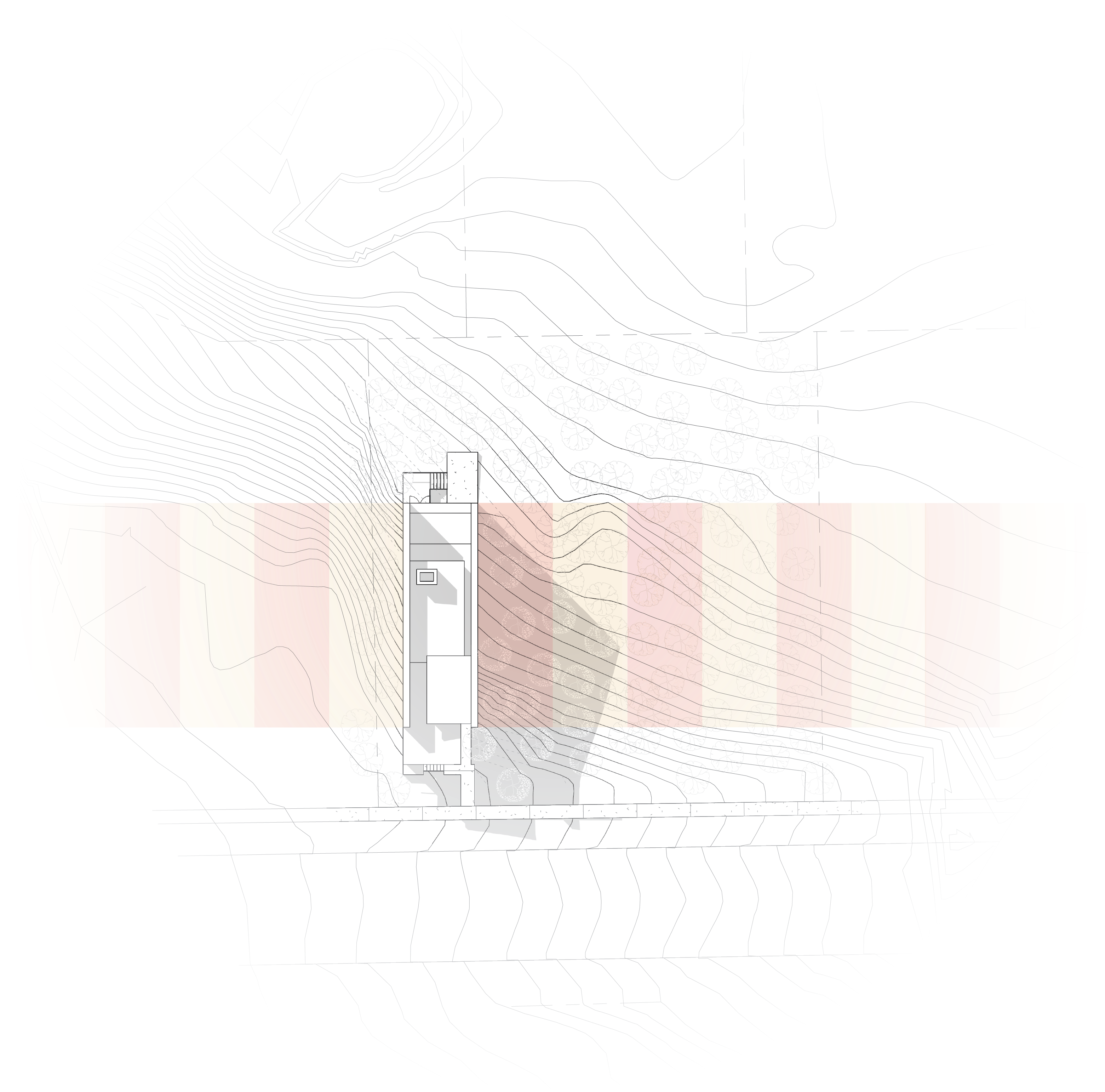
The house itself can also be densified: a workshop space could be converted into a retail space as more residents fill a denser neighborhood, and the loft space and second bedroom could become a studio-type apartment while the bottom half of the structure remains a separate apartment.
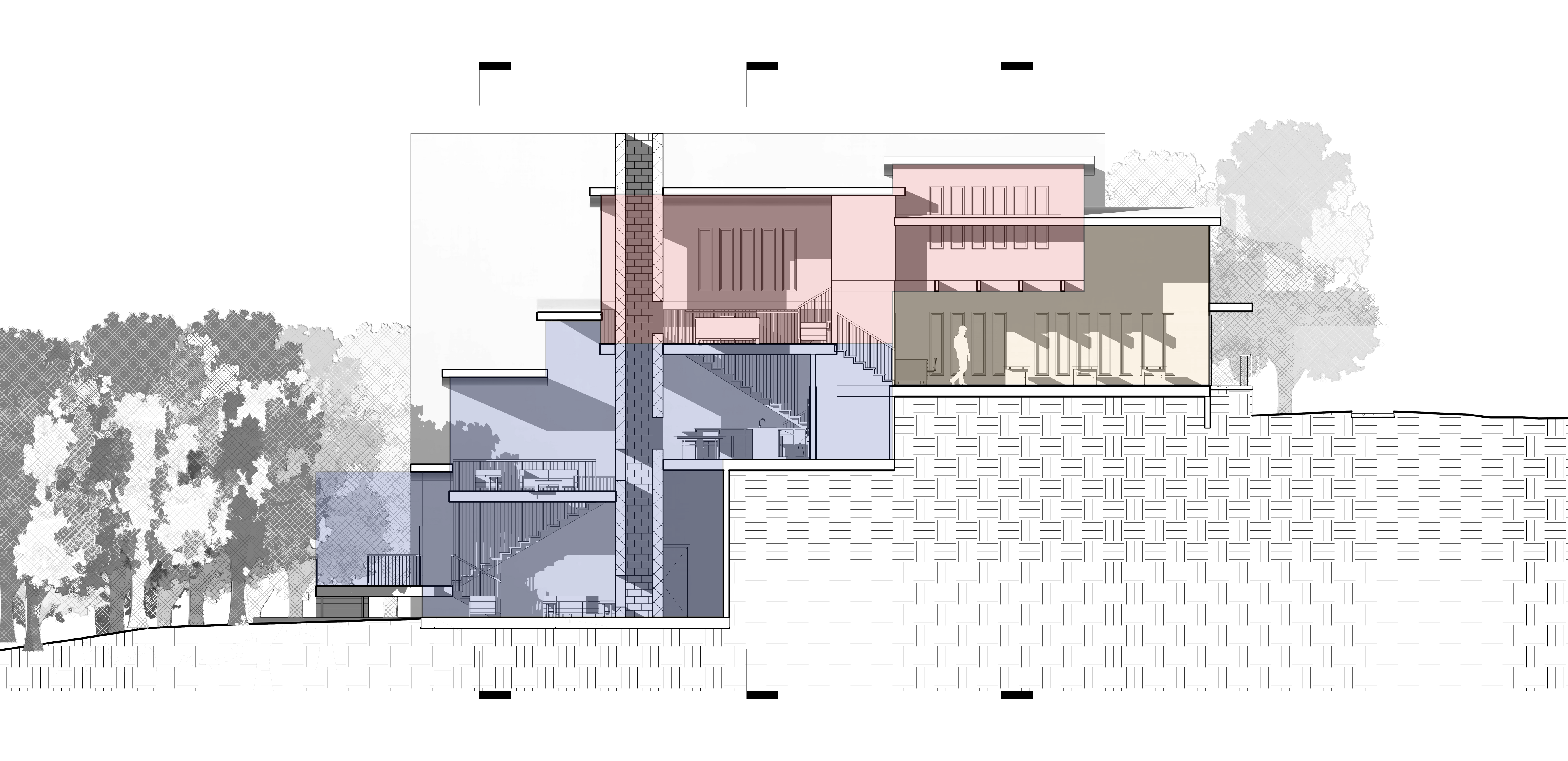
Because the row house typology generally only allows for a room and a hallway beside each other, vertical variation allows for communication between rooms. Additionally, these articulations follow the slope downward toward the back of the site, allowing for natural light in every living space.
The Hajjar competition was created in memory of architect Willian Hajjar, who built mid-century modern homes in State College, PA and Southern California. This project adapts some of the signature principles of Hajjar to the 21st century in the context of density. Most significantly, Hajjar used walls of windows interrupted with floor and roof planes to join views and architecture. This house takes the concept to the logical extreme: the ends of the building are mostly glass, and all roof and floor planes are offset to split views exactly at chest height.
Hajjar researched construction efficiencies to lower construction costs. This house incorporates his principles of vertically aligned plumbing and chimney, also necessitated by the narrow building footprint.
The house re-contextualizes the concept of hiding the residence’s front entry from the street, as Hajjar and Wright designed. The workshop is pulled out to the street, making future office or retail spaces readily visible from the street. This allows the front entry to be tucked away without making the street frontage uninteresting and inviting.
